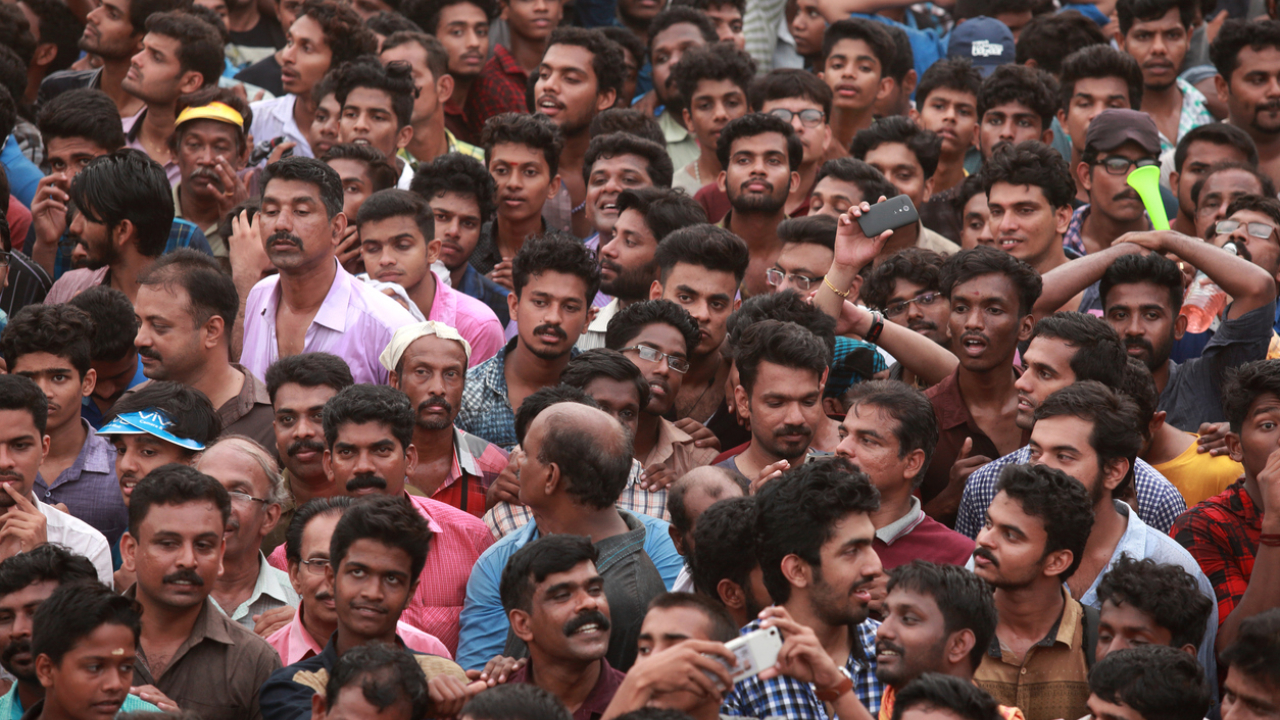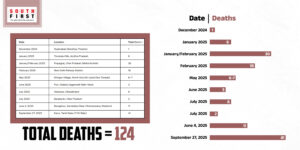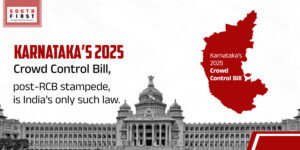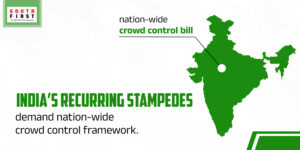Karnataka introduced Crowd Control (Managing Crowd at Events and Venues of Mass Gathering) Bill, 2025, on August 20.
Published Oct 01, 2025 | 8:00 AM ⚊ Updated Oct 01, 2025 | 8:00 AM

Representational image. Credit: iStock
Synopsis: India’s crowd management failures culminated in a deadly stampede at Vijay’s TVK rally in Karur on September 27, killing 41 and injuring over 100 amid underestimated attendance. Reflecting a year of tragedies—from ‘Pushpa 2’ premiere to religious festivals like Maha Kumbh and Rath Yatra—scores died nationwide. Karnataka’s new bill post-RCB chaos offers a model, urging systemic reforms elsewhere.
The deadly stampede in Tamil Nadu’s Karur during actor-turned-politician Vijay’s rally on Saturday, 27 September, adds another blot on India’s already dismal track record in crowd management. Vijay’s Tamilaga Vettri Kazhagam (TVK) event left 41 dead, more than 100 injured, and 50 admitted to hospital.
TVK headquarters had informed the district police that it was expecting only around 10,000 people to attend the meeting. However, according to preliminary reports, more than 50,000 people gathered at the ground, leading to the fatal stampede.
Even as Vijay started speaking, the crowd surged forward for a better glimpse of their ‘Thalapathy‘. In the melee, several swooned, and children were parted from their guardians.

124 people have lost their lives in stampedes in the past one year.
Though Vijay stopped his brief speech multiple times, the crowd could not be managed. The surge of crowd led to several suffocating and gasping for breath.
If we reflect back, a grim pattern emerges – series of stampedes across the country has left scores dead and hundreds injured, highlighting consistent failures in crowd management at religious, cultural, and public events.
From packed temples to bustling railway stations and political rallies, these incidents stress on the urgent need for systemic overhaul, with only one state – Karnataka – taking legislative action so far.
In December 2024, Hyderabad’s Sandhya Theatre saw a crowd surge during the premiere of the film ‘Pushpa 2‘. The stampede that followed claimed the life of a 35-year-old woman and injured her young son. This mishap set a somber tone, but it was just the precursor to a wave of larger disasters, many tied to India’s vibrant religious festivals.
Six devotees lost their lives in January 2025 at Andhra Pradesh’s Lord Venkateswara Swamy Temple in Tirumala Hills amid a rush for free darshan tickets.
In February, the Maha Kumbh in Uttar Pradesh’s Prayagraj saw one of the deadliest event of the year – 30 killed and 60 injured in a pre-dawn surge at the Triveni Sangam, despite AI-based monitoring efforts. Barricades were breached as millions vied for a holy dip on Mauni Amavasya.
Later that month, another horror at New Delhi Railway Station, where 18 pilgrims en route from the Kumbh perished while scrambling to board a train, possibly due to platform confusion.
The same pattern continued into May at Goa’s Sri Lairai Devi Temple during the Lairai Jatra, killing up to seven and injuring over 80 in narrow lanes overwhelmed by 40,000 attendees.
June’s Jagannath Rath Yatra in Puri, Odisha, resulted in three deaths from a sudden rush near the chariots. July saw back-to-back incidents in Uttarakhand and UP, triggered by falling electrical cables at religious gatherings – claiming eight lives combined.
Amid this spate, a non-religious stampede in Bengaluru, Karnataka, on June 4, 2025, stood out for prompting real change. 11 died near Chinnaswamy Stadium during celebrations for Royal Challengers Bengaluru’s IPL victory, as fans forced entry.
This led to arrests for negligence and, crucially, the passage of the Karnataka Crowd Control (Managing Crowd at Events and Venues of Mass Gathering) Bill, 2025, on August 20.

Karnataka passed state Crowd Control Bill, 2025 after the fatal RCB stampede incident
The first-of-its-kind state law mandates permissions scaled to crowd size — deputy superintendent approval for 7,000 to 50,000 people — imposes 3-7 years’ jail and fines up to ₹1 lakh for violations, and requires ₹1 crore indemnity bonds alongside safety features like multiple exits and surveillance.
Critics hail Karnataka’s law as a model, but question why it’s isolated.
Across these events, responses have been predictably reactive: inquiries ordered, compensations disbursed, and minor tweaks for better crowd control.

India needs a well-structured federal framework to prevent the history from repeating itself.
Recurring issues — poor planning, narrow venues, and inadequate policing—persist despite India’s history of such disasters. The Railway Ministry improved announcements post-Delhi, and temples like Tirumala reviewed ticketing, but these steps seem like formalities, more or less.
